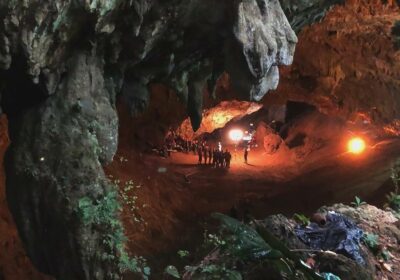Telluride Review: ‘The Rescue’

It was always going to be very difficult for documentary filmmakers Elizabeth Chai Vasarhelyi and Jimmy Chin to equal their sweaty palms masterpiece Free Solo, but they come close enough with The Rescue. Unlike their 2018 Oscar-winner, which focused on one dare-devil climber’s attempt to scale something close to a sheer cliff, the team’s new effort involves a vast operation to save the lives of a dozen teenaged athletes and their coach trapped in a labyrinthian cave in far northern Thailand in June and July of 2018. The suspense and unique character of the widely followed story guarantees vast international viewer interest in this cogently reported National Geographic offering.
It may be difficult for viewers who suffer from claustrophobia and/or fear of the dark to cope with long stretches of this tightly told chronicle. But this is nothing compared to what the participants had to have felt when rapidly rising waters prevented the team, whose members ranged from 11 to 16 years old, from getting out of the vast and complicated cave system. They remained stuck in utter darkness with an ever-diminishing air supply and no food for two weeks, during which time the world followed the story with ever-increasing interest and ever-diminishing hope that the boys would make it out alive.
After establishing the basics of the logistical dilemma, the filmmakers quickly turn their attention to some older British men whose expertise and eccentric personality quirks ended up making them ideal candidates to pull off a long-odds rescue effort. One is Rick Stanton, a cranky 60-ish veteran diver who seems to thrive on the risk and solitary nature of such expeditions and is often joined on challenging dives by another veteran, John Volanthen. Dr. Richard Harris, a diver and anesthetist from Australia, came up with the plan on how the boys mighty be extracted from their suffocating circumstances, assisted by Craig Challen.
Outside the cave, the numbers of people there to assist in the rescue effort grew by the day, as did the number of media, family members and concerned tourists and bystanders, creating something resembling a circus atmosphere, which couldn’t have helped matters. With every passing hour, the depleting oxygen supply reduced the chances of a successful rescue effort, while the trapped kids didn’t know for some time that someone was actually trying to rescue them. That the boys didn’t succumb to utter despair and hopelessness is something close to a miracle.
The same could be said for what the rescue team pulled off, as there is no record of anyone having before been faced with a challenge similar to this one. Seventeen Thai Navy Seals were brought in, the water was often so murky that it was like swimming blind and the water rose six inches per day for a week, creating a race with the clock to rescue the boys before the entire chamber would fill with water.
One can only imagine the states of mind of the boys themselves, who into the second week of their isolation had no idea that anyone knew where they were or that a rescue operation was underway; some American observers considered it a lost cause at this point. Two days later, the divers finally made contact, with all 13 of the stranded ones still in decent shape, but the professionals still had grave doubts about whether they could actually mount a rescue mission.
Film coverage of the event was ample and even brief glimpses of the dark, murky confines of the caves is enough to induce mild levels of claustrophobia and incipient panic. What the men who performed the rescue went through would not have been tolerable to the vast majority of human beings and the ponderous escape process was daunting; there were close calls and moments when all could easily have gone entirely wrong, especially near the end when a monsoon was looming. No one had ever done anything like this before, so it was impossible be sure of anything. Even at the end, it was a very close call.
There are no doubt side stories to the whole drama that were not included and we never get much detail from the boys themselves, who look to have emerged in surprisingly decent condition. The film’s one major faux pas is an embarrassingly awful pop tune applied at the very end that would seem to be present only to qualify for some music awards. Its idiotic tenor completely destroys the mood and makes you want to flee or switch it off at once.
Read More About:
Source: Read Full Article